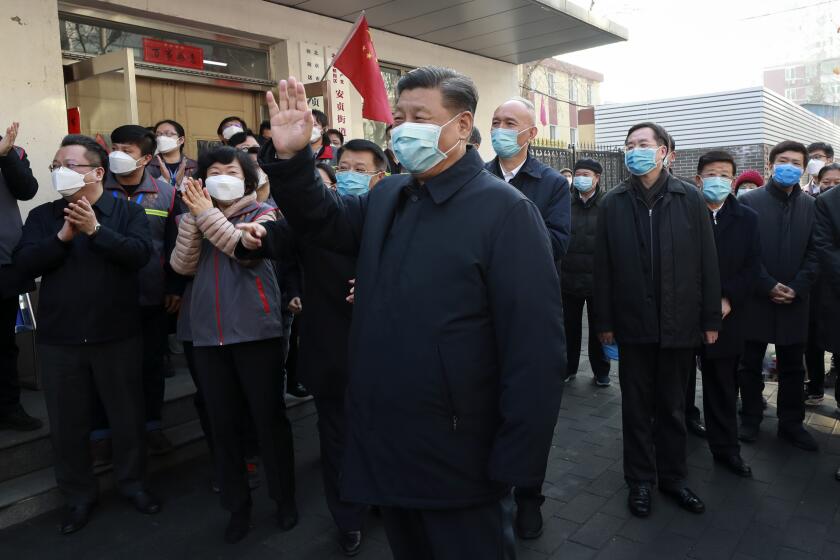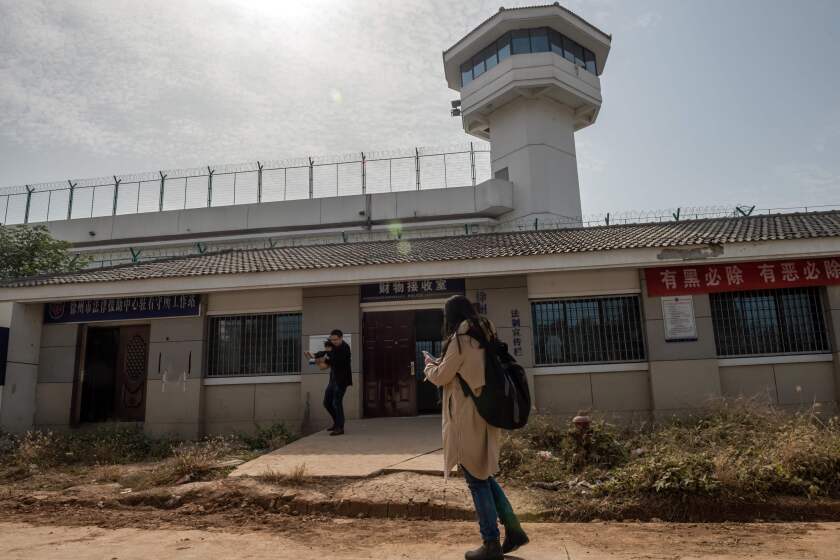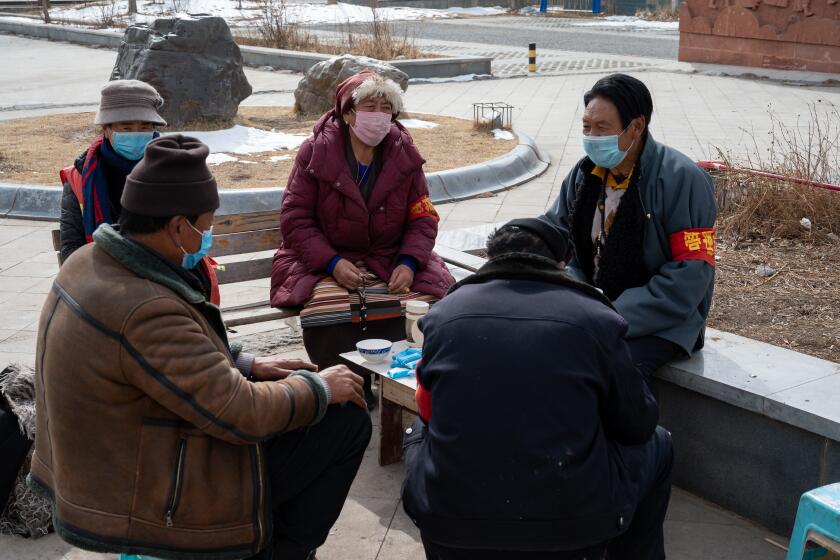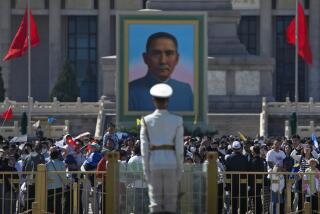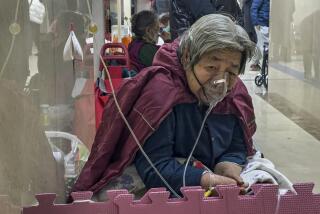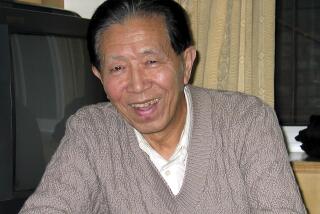As Beijing claims credit for beating coronavirus, many Chinese are outraged: ‘Fake! It’s all fake!’
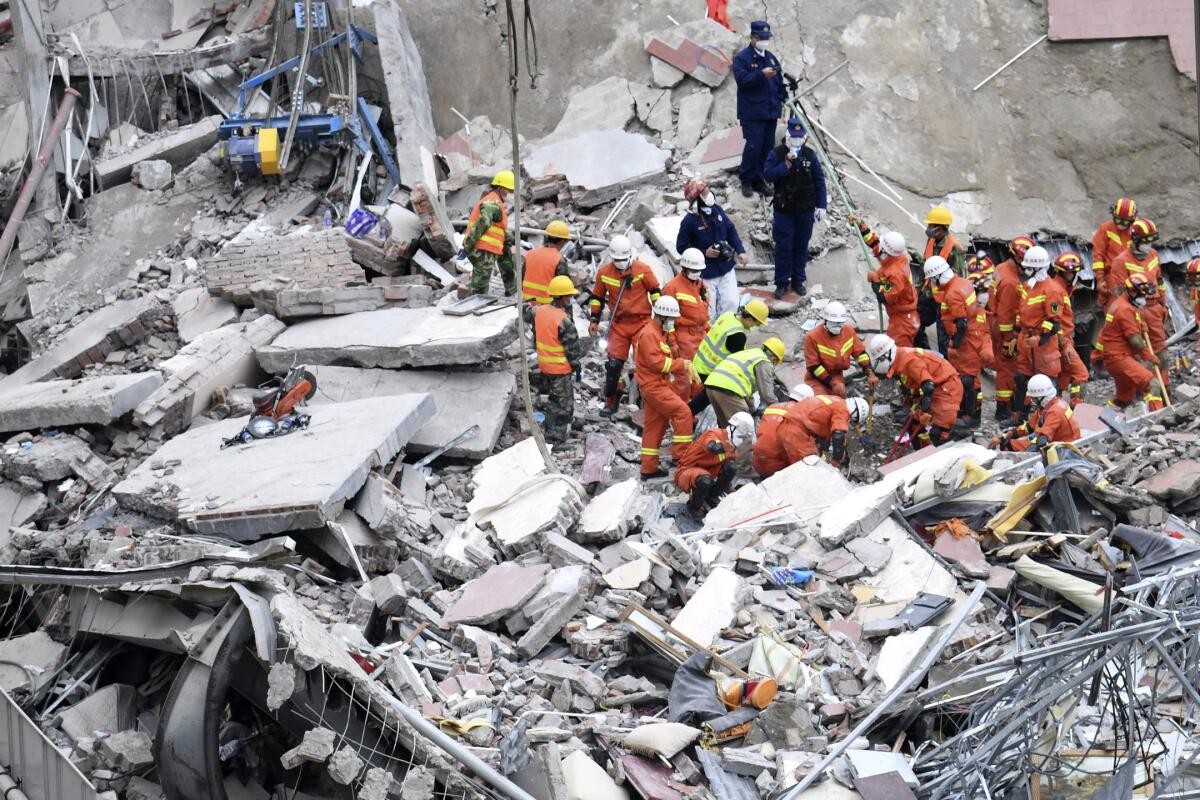
- Share via
BEIJING — The high schooler was lying in his hotel bed, playing a video game, when he heard the sound of rushing sand.
Then the world seemed to cave in.
The ceilings and floors cracked open, people’s screams mixing with the sudden roar of a building tumbling in upon itself. Smoke and dust billowed from the collapsed hotel where Xiang had been isolated on the fourth floor for 12 days, quarantined after traveling from Hubei province, where China’s coronavirus epidemic began.
Xiang’s mother and uncle, also under quarantine, were trapped under the rubble. Xiang managed to climb out, grabbing a rope thrown by firefighters who then moved him to a hospital bed from which he recounted what had happened in a video interview with the Chinese newspaper Beijing News. His full name was not reported. His mother and uncle were later rescued.
Seventy-one people were trapped in the hotel collapse Saturday night, 58 of whom were under quarantine after returning from other parts of China heavily affected by the coronavirus, authorities said. Twenty-six of the 68 who were pulled out of the rubble died. As of Wednesday, three people remained missing.
It was a tragedy that resounded in a nation still largely under self-quarantine and isolation, a preventable disaster on top of more than 80,000 coronavirus infections and 3,000 deaths that have ravaged entire families on the front lines.
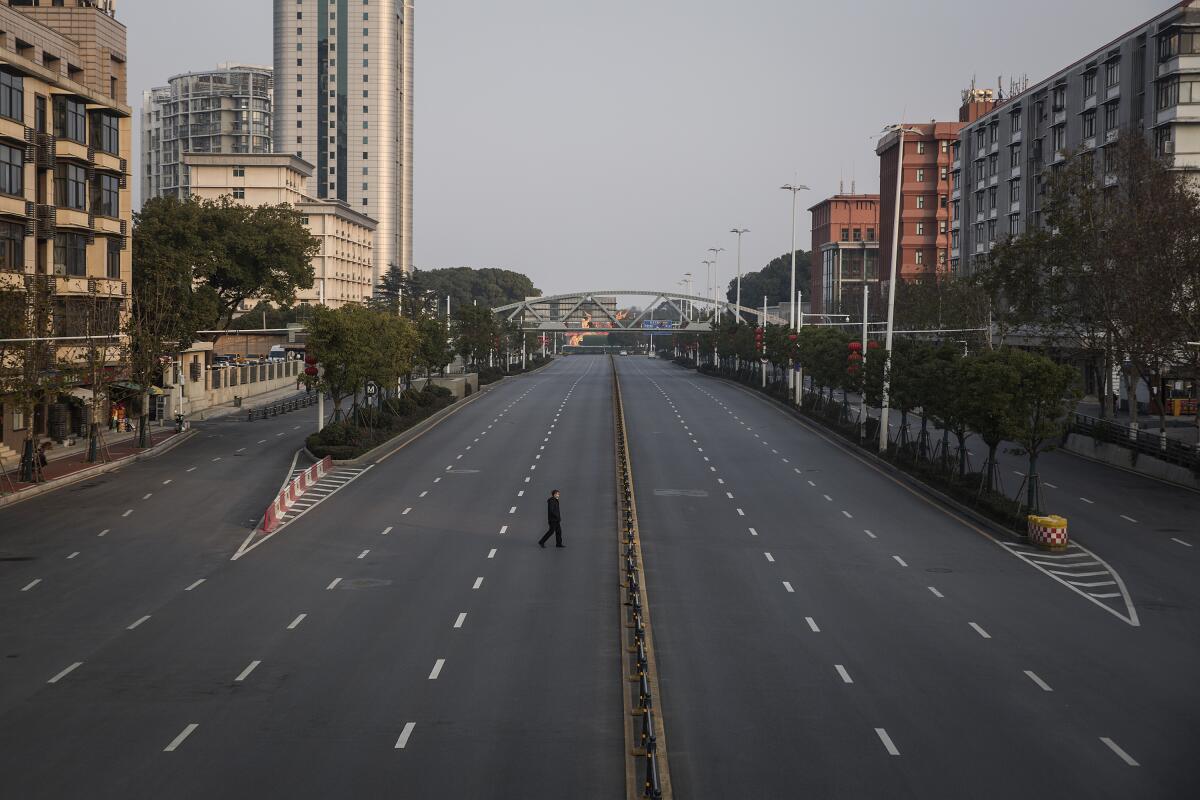
It was also a disturbing reminder of the repeated systemic failures -- innocent deaths amid collapse of poorly constructed buildings without proper supervision, viral outbreaks exacerbated by political cover-ups for the sake of saving face -- that prick holes in China’s desired image as a wealthy superpower poised to lead the world.
As China’s coronavirus numbers drop, with a slowing rate of daily new infections and deaths, Beijing is pushing the narrative of a Communist Party-led victory. Instead of acknowledging initial missteps that allowed the spread of a virus that is now a global threat, Chinese diplomats are boasting that the country’s authoritarian system produced a superior disease control model that the rest of the world should emulate.
But many Chinese people, especially those who have suffered the most from the outbreak, have a different story to tell about the failings of their government.
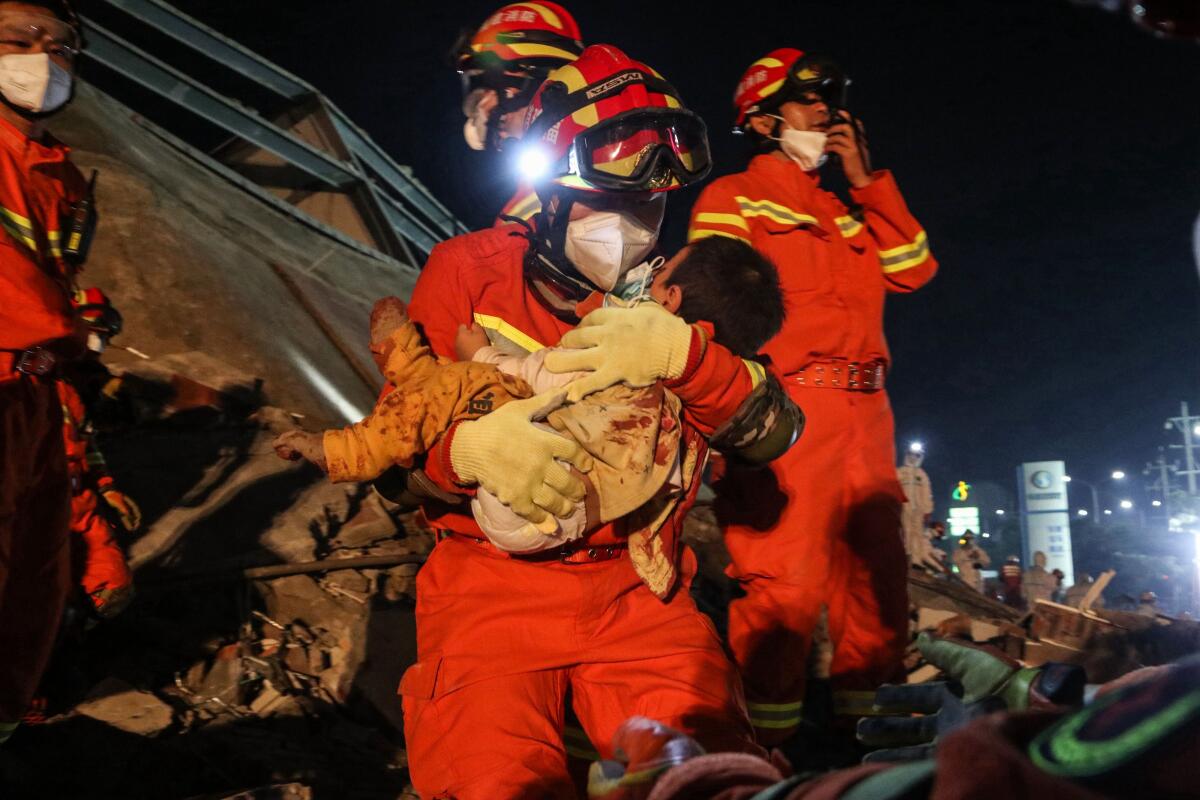
While no official reason has been declared for the Quanzhou hotel collapse, police have detained the building’s owner and are investigating whether ground-floor renovations were to blame. On Monday, central authorities released a report about mismanagement of construction projects in surrounding Fujian province.
Among an online outpouring of grief for the victims, many comments cited the term “tofu-dreg construction,” referring to shoddy construction more concerned with profits than building codes.
As Wuhan’s Communist Party chief boasted of successes, the city’s sick and desperate blamed the government for not containing the coronavirus.
The term was coined in 2008 during the Wenchuan earthquake in Sichuan province, when thousands of children died in collapsed “tofu-dreg” schools. Families and schoolteachers who sought accountability for the bad construction were silenced through detention and police threat.
“The reason is still unclear, it’s corruption and ‘tofu construction’ again, when can our nation become more rational?” wrote a user on the social media platform Weibo.
“I feel despair after getting locked into a room for just one hour. I can’t imagine those people trapped under rocks for many hours. Hope they are all surviving and strong,” wrote another, evoking the frustration of hundreds of millions of people in China who have been largely confined to their homes for the last 1½ months.
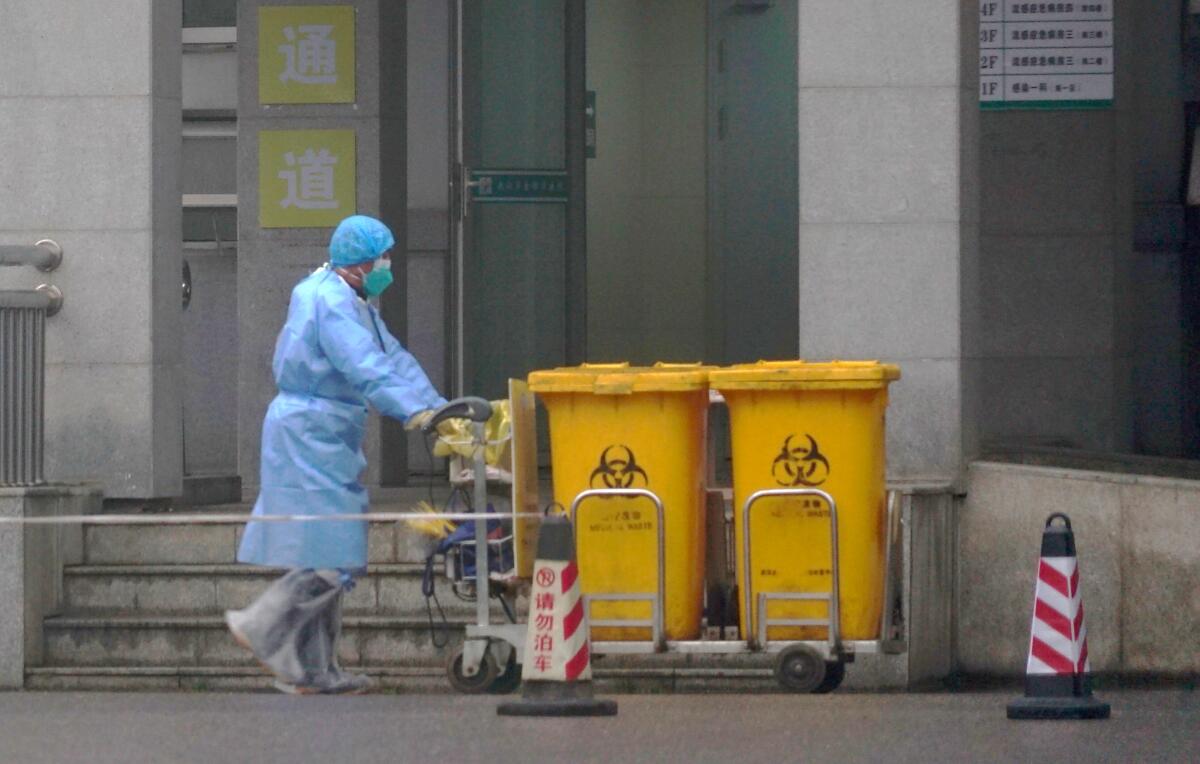
Chinese diplomats have meanwhile begun a campaign -- giving more than 400 media interviews and publishing more than 300 articles in recent weeks, according to the Foreign Ministry -- to praise the government’s virus control methods. State media recently celebrated the publication of a book by the central propaganda department about China’s successes against the coronavirus, titled “A Battle Against Epidemic: China Combating COVID-19 in 2020.”
The book will be published in English, French, Spanish, Russian and Arabic, according to a Feb. 26 news release by the official New China News Agency, so that the world could learn from China’s disease control methods. But at home, skepticism and anger run deep, so much so that the party has been forced to backtrack several times on its propaganda.
Critics on the social media app WeChat circulated images of the “Battle Against Epidemic” book cover with the comment “Totally shameless,” possibly prompting a reconsideration of the timing for the book’s publication. As of Monday, it still was not available for purchase.
Backlashes have surfaced in other places too. Vice Premier Sun Chunlan, one of the party’s highest-ranking officials, was touring a residential compound in Wuhan last week, the epidemic’s ground zero, when residents began shouting from their apartment windows: “Fake! Fake! It’s all fake!”
More than 500 coronavirus cases have been confirmed across five prisons in three Chinese provinces. Families fear they don’t have the whole story.
Local news media reported that residents were protesting because the compound’s management had done a last-minute cleanup and orchestrated a fake setup of grocery delivery to locked-down apartments, when in reality residents were being confined and neglected.
In an unusual move, both the state-run People’s Daily and CCTV published videos of the incident, but added commentary saying the central government was against such staged inspections and criticizing local officials’ cover-up of real problems.
Then over the weekend, Wuhan’s recently installed party secretary, Wang Zhonglin, ignited public fury again when he called for citywide “gratitude education” on the Wuhan Communist Party newspaper’s front page. Wang was quoted saying Wuhan’s citizens should be educated “so that they thank the General Secretary [Xi Jinping], thank the Chinese Communist Party, heed the Party, walk with the Party, and create strong positive energy.”
Journalist Chu Zhaoxin criticized Wang in a post that was later deleted: “You are a public servant, and your job is to serve the people. Now the people you serve are broken, the dead are still cold, and the tears of the living have not yet dried. The sick have not yet recovered, and much of their dissatisfaction is completely reasonable.”
Wang’s missive was quickly deleted. Hubei’s party secretary, Ying Yong, made new headlines with a public statement saying, “I express sincere gratitude to the people of Wuhan and the people of Hubei.”
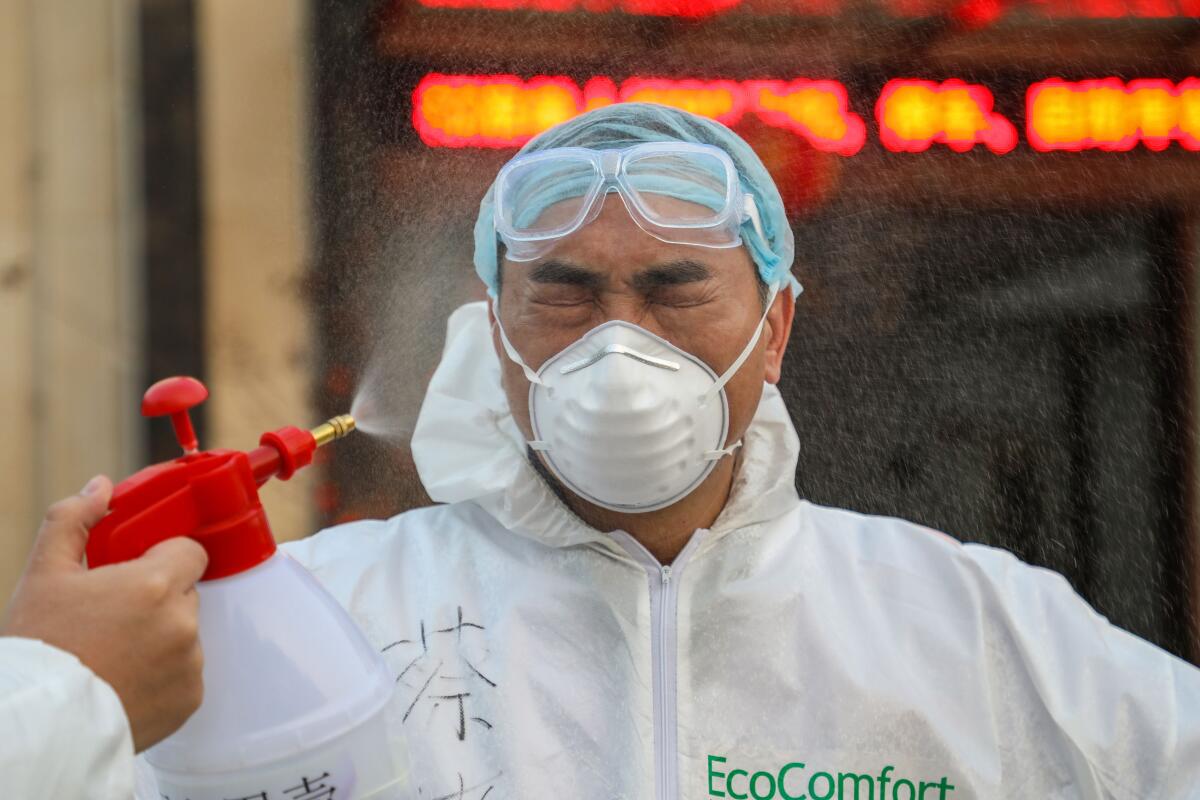
Meanwhile, volunteer groups in and outside China have begun archiving their own histories of the COVID-19 outbreak, saving and posting Chinese investigations, interviews, personal essays and social media posts on Google Docs and GitHub. They are building a people’s narrative of the epidemic, captured in screenshots taken faster than the censors can delete them.
Others have gone further: Li Zehua, a 25-year-old CCTV news anchor, resigned from his job so he could report independently from Wuhan.
Inspired by Chen Qiushi, a lawyer who’d also recorded videos of hospitals in Wuhan and then was detained, Li made video dispatches, often in a Los Angeles Lakers sweatshirt. He reported from a Wuhan crematorium, among migrant workers who’d become homeless under lockdown at the train station, and in the neighborhood where officials had allowed 40,000 families to gather for a Chinese New Year potluck instead of warning them about an infectious outbreak.
An American photographer went to Garze, a Tibetan autonomous area in China’s Sichuan province, and stumbled upon the coronavirus outbreak there. Here’s what she saw.
He was reportedly detained on Feb. 26. As state security officers knocked on his door, Li recorded a final message, declaring his “clear conscience” toward his family, his country, and the Communication University of China, where he’d studied journalism.
“I’m not willing to disguise my voice, nor am I willing to shut my eyes and close my ears,” he said, adding that he sympathized even with the security officers at the door: “When you support such a cruel order unconditionally, the day will come when the same cruel order falls on your own heads.”
He quoted a line from revolutionary Chinese writer Lu Xun: “In this China of ours there have always been those who speak for the people, who fight tenaciously, who abandon their bodies in search of the truth.... In these people we discover China’s spine.”
Then he opened the door. Two men entered, and the screen went dark.
Gaochao Zhang and Nicole Liu of The Times’ Beijing bureau contributed to this report.
More to Read
Sign up for Essential California
The most important California stories and recommendations in your inbox every morning.
You may occasionally receive promotional content from the Los Angeles Times.
